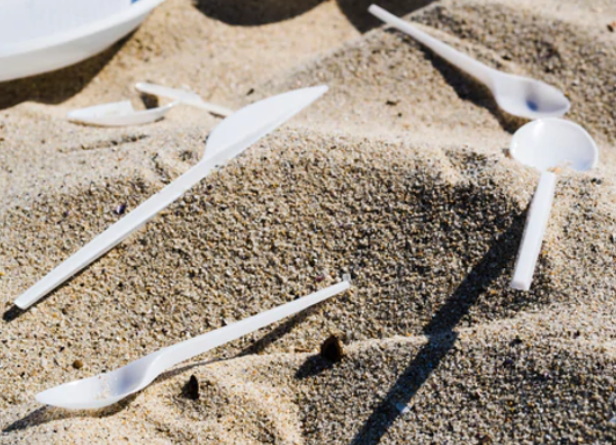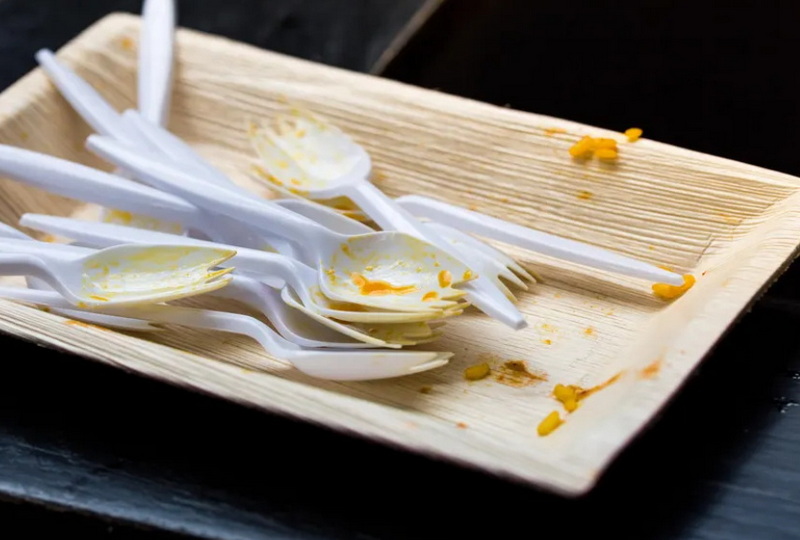
Content Menu
● Introduction to Disposable Spoons
>> Environmental Impact of Plastic Disposable Spoons
>>> Production and Carbon Footprint
>>> Impact on Marine Life
>> Sustainable Alternatives to Disposable Spoons
>> Promoting Sustainable Practices
● The Role of Technology in Sustainable Solutions
>> Innovations in Biodegradable Materials
>> Smart Recycling Systems
● Consumer Behavior and Environmental Change
>> The Power of Individual Actions
>> Community Engagement
● Conclusion
● FAQs
>> 1. What are disposable spoons typically made of?
>> 2. How long do plastic disposable spoons take to decompose?
>> 3. What are some sustainable alternatives to disposable plastic spoons?
>> 4. Why is it important to choose sustainable alternatives?
>> 5. How can consumers promote sustainable practices?
● Citations:
Disposable spoons have become an integral part of our daily lives, offering convenience in various settings such as restaurants, parties, and take-out orders. However, their impact on the environment is a pressing concern that cannot be overlooked. This article delves into the environmental implications of disposable spoons, exploring their production, usage, and disposal, as well as sustainable alternatives that can mitigate their adverse effects.

Introduction to Disposable Spoons
Disposable spoons are typically made from plastic, wood, or biodegradable materials. Plastic spoons, being the most common, are crafted from non-biodegradable materials like polystyrene or polypropylene, which are derived from fossil fuels. These materials are chosen for their low cost and ease of production but come with significant environmental costs.
Environmental Impact of Plastic Disposable Spoons
Plastic disposable spoons contribute significantly to plastic pollution. They are used briefly and then discarded, often ending up in landfills where they take hundreds of years to decompose. During this time, they can break down into microplastics, contaminating soil and water sources, and posing a threat to wildlife and human health.
Production and Carbon Footprint
The production of plastic spoons involves the extraction and processing of petroleum, a process that emits greenhouse gases. Additionally, the transportation and disposal of these spoons further contribute to their carbon footprint. The reliance on non-renewable fossil fuels for plastic production exacerbates resource depletion and contributes to climate change.
Impact on Marine Life
Plastic spoons that find their way into water bodies severely threaten marine life. Animals may mistake them for food or become entangled in them, leading to fatal outcomes. The accumulation of plastic waste in oceans is a critical issue that affects marine ecosystems and biodiversity.
Sustainable Alternatives to Disposable Spoons
To mitigate the environmental harm caused by disposable plastic spoons, several sustainable alternatives have emerged:
1. Reusable Spoons: Made from materials like stainless steel, bamboo, or silicone, these spoons can be used multiple times, reducing the need for single-use products. They are durable, easy to clean, and have a much lower environmental footprint over their lifespan.
2. Compostable Spoons: Crafted from materials like cornstarch or polylactic acid (PLA), these spoons decompose much faster than plastic, reducing their environmental impact. However, proper disposal in composting facilities is essential for efficient decomposition.
3. Edible Spoons: An innovative option made from ingredients like wheat, rice, or sorghum, these spoons can be consumed after use, leaving no waste behind. They are particularly useful for events where waste disposal might be challenging.
4. Wooden Disposable Spoons: While not as durable as reusable options, wooden spoons are biodegradable and sourced from renewable resources. They offer a more eco-friendly alternative to plastic, though they require proper maintenance to prevent bacterial growth.
Promoting Sustainable Practices
Encouraging consumers to adopt sustainable alternatives involves several strategies:
- Awareness Campaigns: Public campaigns highlighting the negative effects of disposable spoons and the benefits of sustainable alternatives can influence consumer behavior. Social media, blogs, and community events are effective platforms for spreading this message.
- Incentives: Offering discounts at cafes for bringing your own spoon or rewards programs for eco-friendly practices can encourage consumers to make sustainable choices.
- Policy Changes: Governments and organizations can implement policies to reduce the use of disposable spoons. Bans on single-use plastics, subsidies for sustainable products, and mandatory recycling programs can significantly impact consumption patterns.

The Role of Technology in Sustainable Solutions
Technology plays a crucial role in developing innovative solutions to reduce plastic waste. From biodegradable materials to smart recycling systems, advancements in technology can help minimize the environmental impact of disposable spoons.
Innovations in Biodegradable Materials
Recent innovations in biodegradable materials have led to the development of compostable spoons that can replace traditional plastic ones. These materials are derived from renewable resources and decompose naturally, reducing plastic pollution.
Smart Recycling Systems
Smart recycling systems can improve the efficiency of waste management by better sorting and processing recyclable materials. This technology can help increase the recycling rate of plastics, though challenges remain due to the complexity of plastic types.
Consumer Behavior and Environmental Change
Consumer awareness and behavior change are crucial in reducing the environmental impact of disposable spoons. By understanding the consequences of their choices, consumers can opt for sustainable alternatives and support policies that promote environmental protection.
The Power of Individual Actions
Individual actions, such as choosing reusable spoons or supporting eco-friendly brands, may seem small but collectively contribute to significant environmental change. Encouraging friends and family to adopt sustainable practices can amplify this impact.
Community Engagement
Community involvement in environmental initiatives can drive change by promoting sustainable practices and influencing local policies. Organizing clean-up events or advocating for sustainable alternatives in local businesses can foster a sense of responsibility among community members.
Conclusion
Disposable spoons, particularly those made from plastic, pose a significant threat to the environment due to their non-biodegradable nature and contribution to plastic pollution. However, by embracing sustainable alternatives such as reusable, compostable, or edible spoons, we can reduce plastic waste and promote a greener future. It is essential for consumers, businesses, and governments to work together to implement policies and practices that support environmental sustainability.

FAQs
1. What are disposable spoons typically made of?
Disposable spoons are commonly made from plastic materials like polystyrene or polypropylene, though alternatives include wood and biodegradable materials.
2. How long do plastic disposable spoons take to decompose?
Plastic disposable spoons can take hundreds of years to decompose, contributing to long-term environmental pollution.
3. What are some sustainable alternatives to disposable plastic spoons?
Sustainable alternatives include reusable spoons made from stainless steel or bamboo, compostable spoons made from cornstarch, and edible spoons made from food-grade materials.
4. Why is it important to choose sustainable alternatives?
Choosing sustainable alternatives helps reduce plastic pollution, conserve natural resources, and mitigate the harmful effects of microplastics on marine life and human health.
5. How can consumers promote sustainable practices?
Consumers can promote sustainability by choosing eco-friendly products, supporting policies that ban single-use plastics, and participating in community initiatives that advocate for environmental protection.
Citations:
[1] https://www.freshtableware.in/post/plastic-spoons-the-harm-that-they-do
[2] https://cosmosecofriends.com/the-environmental-impact-of-disposable-spoons-and-sustainable-alternatives/
[3] https://emeraldecovations.com/2024/08/uncovering-the-environmental-impact-of-plastic-spoons/
[4] https://www.istockphoto.com/photos/disposable-spoon
[5] https://droppe.com/blog/article/disposable-spoons-for-food-service-selecting-the-right-options/
[6] http://thbamboo.com.vn/environmental-impact-of-wooden-disposable-spoons-vs-plastic-spoons-a-comprehensive-analysis-342581
[7] https://wonbonwood.com/disposable-wooden-spoons-safe/
[8] https://wonbonwood.com/disposable-wooden-spoons-safety/
[9] https://www.thegoodboutique.com/inspiration/the-environmental-impact-of-disposable-tableware-and-sustainable-alternatives
[10] https://ahimsahome.com/blogs/childrens-health-blog/the-surprising-impact-of-plastic-utensils-on-our-planet
[11] https://www.anchenggy.com/blog/why-is-plastic-cutlery-bad-for-the-environment-understanding-the-harmful-impact.html
[12] https://www.wafadpm.com/news/industry-news/disposable-flatware-cutlery-spoon-how-to-balance-environmental-protection-and-convenience.html
[13] https://www.nationalgeographic.com/environment/article/carrying-your-own-fork-spoon-help-plastic-crisis
[14] https://grist.org/living/which-disposable-utensils-are-lightest-on-the-land/
[15] https://www.vanellagroupmn.com/the-environmental-and-health-impacts-of-single-use-plastics-and-what-we-can-do-to-reduce-their-use
[16] https://www.linkedin.com/pulse/disposable-wooden-cutlery-safe-unraveling-truth-jason-inbnc
[17] https://ch.duni.com/it/magazin/einwegbesteck
[18] https://nylcv.org/news/skip-the-stuff-a-simple-solution-to-the-single-use-plastics-epidemic/
[19] https://www.watergen.com/blog/the-price-we-pay-for-convenience-the-true-impact-of-plastic-cutlery/
[20] https://genaq.com/impact-plastic-cutlery/
[21] https://www.alder-tek.com/sustainability-of-wooden-utensils-the-environmental-benefits/
[22] https://www.freepik.com/free-photos-vectors/disposable-spoon
[23] https://www.shutterstock.com/search/plastic-spoons-waste
[24] https://www.freepik.com/free-photos-vectors/disposable-spoons
[25] https://www.shutterstock.com/search/plastic-spoon-pollution
[26] https://www.youtube.com/watch?v=A-Ck6bbjoWk
[27] https://www.alamy.com/stock-photo/plastic-spoon-rubbish.html
[28] https://www.alamy.com/stock-photo/plastic-spoon-rubbish.html?page=2
[29] https://www.shutterstock.com/video/search/spoon-trash
[30] https://create.vista.com/photos/disposable-spoon/
[31] https://create.vista.com/photos/disposable-spoons/
[32] https://www.pond5.com/stock-footage/item/242232141-close-disposable-plastic-spoon-lies-green-sea-grass
[33] https://www.vecteezy.com/free-photos/disposable-cutlery
[34] https://www.shutterstock.com/video/search/plastic-cutlery-waste
[35] https://www.pexels.com/photo/glove-beside-plastic-spoons-7048060/
[36] https://www.easyngreen.com/eight-common-questions-about-ecofriendly-disposable-utensils.html
[37] https://www.anchenggy.com/blog/must-ask-questions-for-your-disposable-tableware-supplier.html
[38] https://www.anchenggy.com/blog/disposable-cutlery-food-safety-impact.html
[39] https://packagingfg.com/2023/10/06/disposable-food-cutlery-benefits/
[40] http://www.wna.biz/UserFiles/File/Metallized_Disposable_Cutlery_FAQ.pdf
[41] https://www.magnumpackaging.co.uk/disposable-cutlery-faq-i27
[42] https://customcupfactory.com/blogs/news/safety-check-are-plastic-spoons-safe-for-restaurant-use
[43] https://droppe.com/blog/article/how-to-choose-the-right-disposable-cutlery-for-food-service-a-buyers-guide/
[44] https://www.cleaninginstitute.org/cleaning-tips/clean-home/ask-aci/ask-aci-washing-disposable-dishes-and-utensils
[45] https://www.kimecopak.ca/blogs/news/tips-for-using-disposable-utensils-safely
[46] https://www.youtube.com/watch?v=J8QKy1nh5Ek
[47] https://www.istockphoto.com/photos/plastic-spoon
[48] https://www.youtube.com/watch?v=r4Cc5zmy0eY
[49] https://www.youtube.com/watch?v=Tg3j1aFN2_Y

















